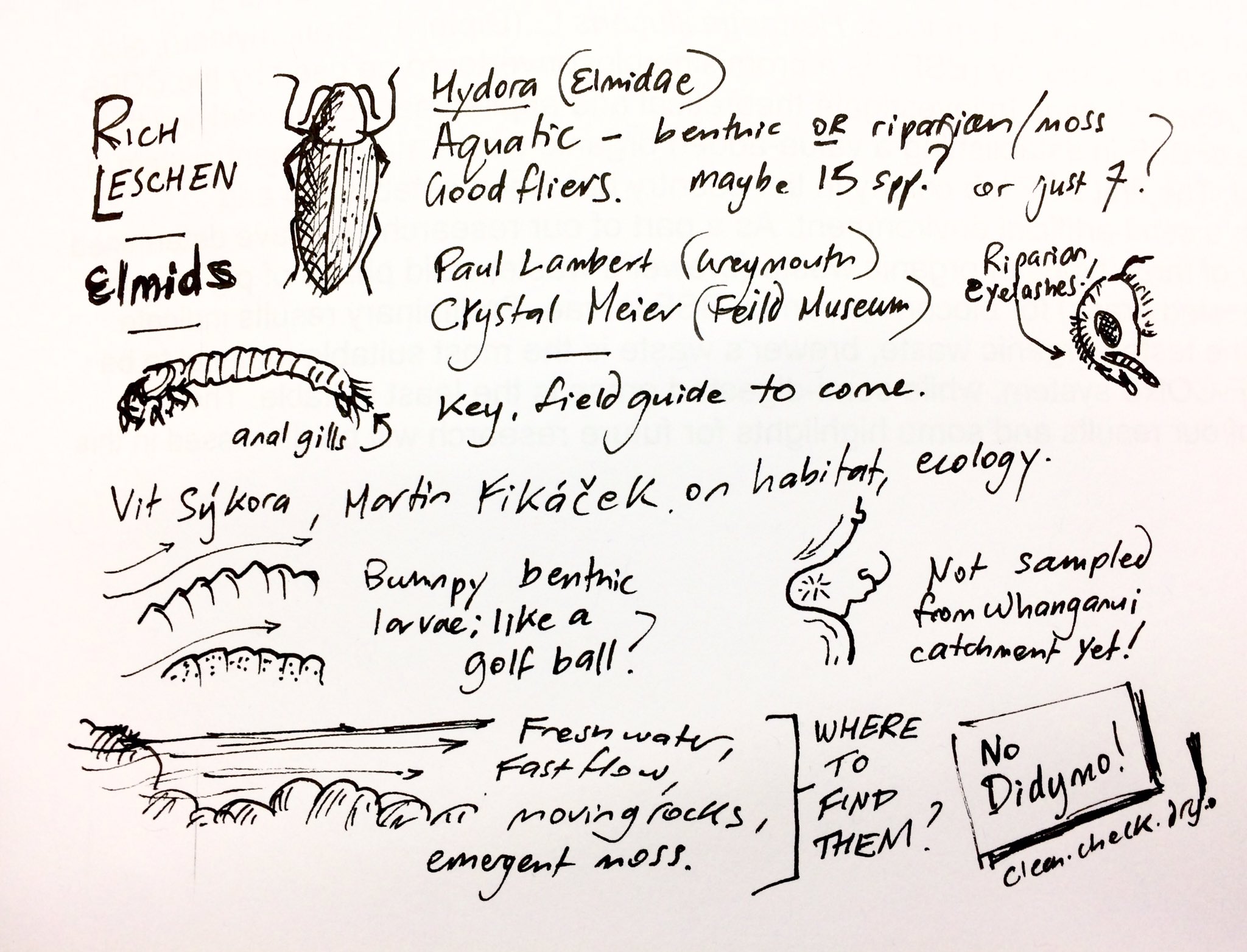Hydora lanigera (photo Manaaki Whenua)
We have few beetles in New Zealand that could be called truly aquatic but, what we do have includes the riffle beetles in the genus Hydora. With so few beetle groups inhabiting our streams, the ones we do have pose interesting evolutionary and ecological questions. To answer these and other questions I’m working with a number of scientists from around the world.
So far, we have only seven species described from New Zealand but, based on a lot of collecting we think that number will increase to 30!

Vit Sykora, a PhD student at Charles University (Czech Republic), is working on the genetics of the New Zealand Hydora and it looks like there are three main lineages. One lineage has fully aquatic adults and larvae and even mating occurs underwater.
The second lineage is semi-terrestrial as adults and larvae and are present in the riparian zone, especially along smaller streams with good canopy cover and lots of mosses. My colleague, Crystal Maier (Harvard University), refers to these species as “those mossy things with bumpy larvae”.
One of which was collected and described by Paul Lambert (NIWA, Greymouth) who kicked off our interest in the New Zealand Hydora.

The third lineage is intermediate between lineages one and two and is characterised by riparian adults that mate above the waterline with fully aquatic larvae. The three lineages are featured in this video.
As part of a nationwide water quality monitoring programme insect larvae are capture from river gravels and counted. Hydora larvae are one of the most abundant insects in these habitats. Some of data from the monitoring was used in a recent study (Klink et al. 2020) that showed that the world’s freshwater insects, unlike terrestrial insects, were not in decline.
However, we need to be cautious about what this means for how individual species of Hydora are responding to environmental changes as the data was only to genus and not species level. That is, we aren’t certain if individual species numbers are on the increase, in decline, or stable. While fully aquatic and intermediate Hydora species may be common, the mossy species are less abundant and often very difficult to find.
Some of the rarest Hydora species include Hydora lanigera which is found in slow-water springs at the edges of braided rivers in the central South Island. There is also a complex of rare species present in the Otago highlands and in Wellington city, species for which we have no genetic data, and few specimens for study.
One of our goals is to develop tools to help identify both the adults and larvae to species. And, when Vit Sykora completes his genetic analysis we will have an exciting snapshot into the origin and evolution of New Zealand’s aquatic fauna.
Reference

